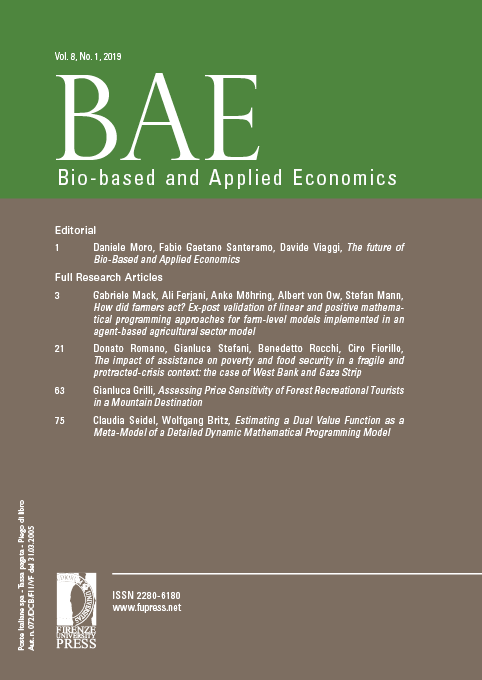Published 2020-02-24
How to Cite
Abstract
Despite the large use of the travel cost method as estimation technique for the demand for forest recreation, information on price elasticity is only seldom reported. In this way, it is hard to understand if a large consumer surplus could be reflected in income opportunities for the local populations, because it is unknown whether the number of annual trips will decrease as a consequence of price changes. This is particularly relevant in remote rural areas, where few other opportunities for additional earnings are available. This contribution attempts to fill this gap, estimating price elasticities for two different specifications of the cost for travel; a first specification includes cost for travel only, while the second comprise on-site expenditures (such as food and accommodation). Data were collected by means of a questionnaire survey administrated to a sample of local visitors and analysed with a Poisson model. Results suggest that visitors have different sensitivities to distance travelled and to expenses locally sustained, the first being more elastic.






